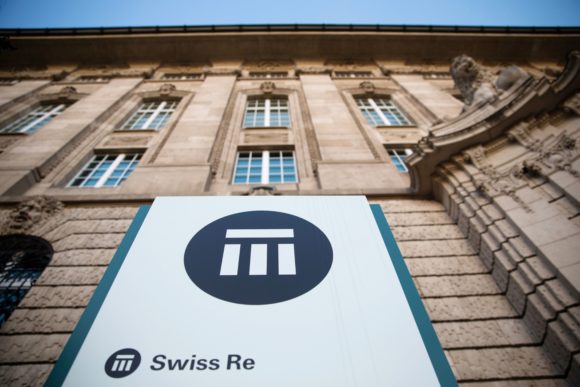S&P Global Ratings said that even though Swiss Re performed materially below expectation for its 2019 earnings, the ratings agency expects the group to maintain its risk-based capital above the “AA” level, which supports the “AA-” long-term ratings and stable outlook on its core operating entities.
Swiss Re on Feb. 20 reported much worse financial results for 2019 than S&P anticipated – a net income of $727 million, compared with S&P’s forecast of nearly $2.5 billion as at August 2019.
Swiss Re suffered higher-than-expected natural catastrophe losses, notably from Dorian, Faxai, Hagibis, and the Australian bushfires, said S&P. In addition, the company saw prior-year adverse reserve developments related to Typhoon Jebi and the U.S. casualty lines, which hit both its reinsurance business and its primary unit, Corporate Solutions.
In particular, Corporate Soutions’ performance has remained weak – it reported a bottom-line loss of $647 million in 2019 – and this continues to hurt the group’s results, said S&P, adding that the group still expects its corrective underwriting actions to improve the unit’s combined (loss and expense) ratio to 98% by year-end 2021.
The reinsurance business reported a high combined ratio of 107.8%, while Corporate Solutions reported another very high combined ratio (127.9%), continued S&P. “Once again, the group’s bottom line benefited from good results in the life and health reinsurance business (net income of $899 million) and favorable investment returns, with a running yield of 2.8%.
Overall, S&P noted, Swiss Re’s non-life results make the group a negative outlier relative to close peers.
However, unlike some of its peers, Swiss Re Group benefits from its capital buffer, which it has built up over time, above its requirement for ‘AAA’ level risk-based capital (measured using our model), said S&P. From a regulatory perspective, S&P anticipates that the Swiss Re Group is likely to report a solvency ratio above its target of 220% (241% at midyear 2019).
S&P expects the group to post a combined ratio of 95%-99% (reinsurance and Corporate Solutions consolidated) for 2020 and net income close to $2.5 billion. The ratings agency attributed this to its underwriting performance on the non-life side, which is likely to benefit from premium rate rises through 2020 renewals.
“The rate rises for April renewals are likely to be favorable, particularly following the material losses from Japan during 2019. Furthermore, earnings from life and health reinsurance will continue to support earnings,” S&P concluded.
Source: S&P Global Ratings
Photograph: Swiss Re’s logo sits on a sign outside Swiss Re AG’s headquarters in Zurich, Switzerland, on Tuesday, March 18, 2014. Photo credit: Philipp Schmidli/Bloomberg.
Topics Profit Loss Reinsurance
Was this article valuable?
Here are more articles you may enjoy.



 AIG’s Zaffino to Step Down as CEO as Aon’s Andersen Steps In
AIG’s Zaffino to Step Down as CEO as Aon’s Andersen Steps In  CRC Group Signs Agreement to Acquire Euclid Transactional
CRC Group Signs Agreement to Acquire Euclid Transactional  Howden US Tells Judge Brown & Brown Employees Fled Due to ‘Mistreatment’
Howden US Tells Judge Brown & Brown Employees Fled Due to ‘Mistreatment’  Longtime Motel 6 Spokesman Tom Bodett Settles Lawsuit Against Chain
Longtime Motel 6 Spokesman Tom Bodett Settles Lawsuit Against Chain 

